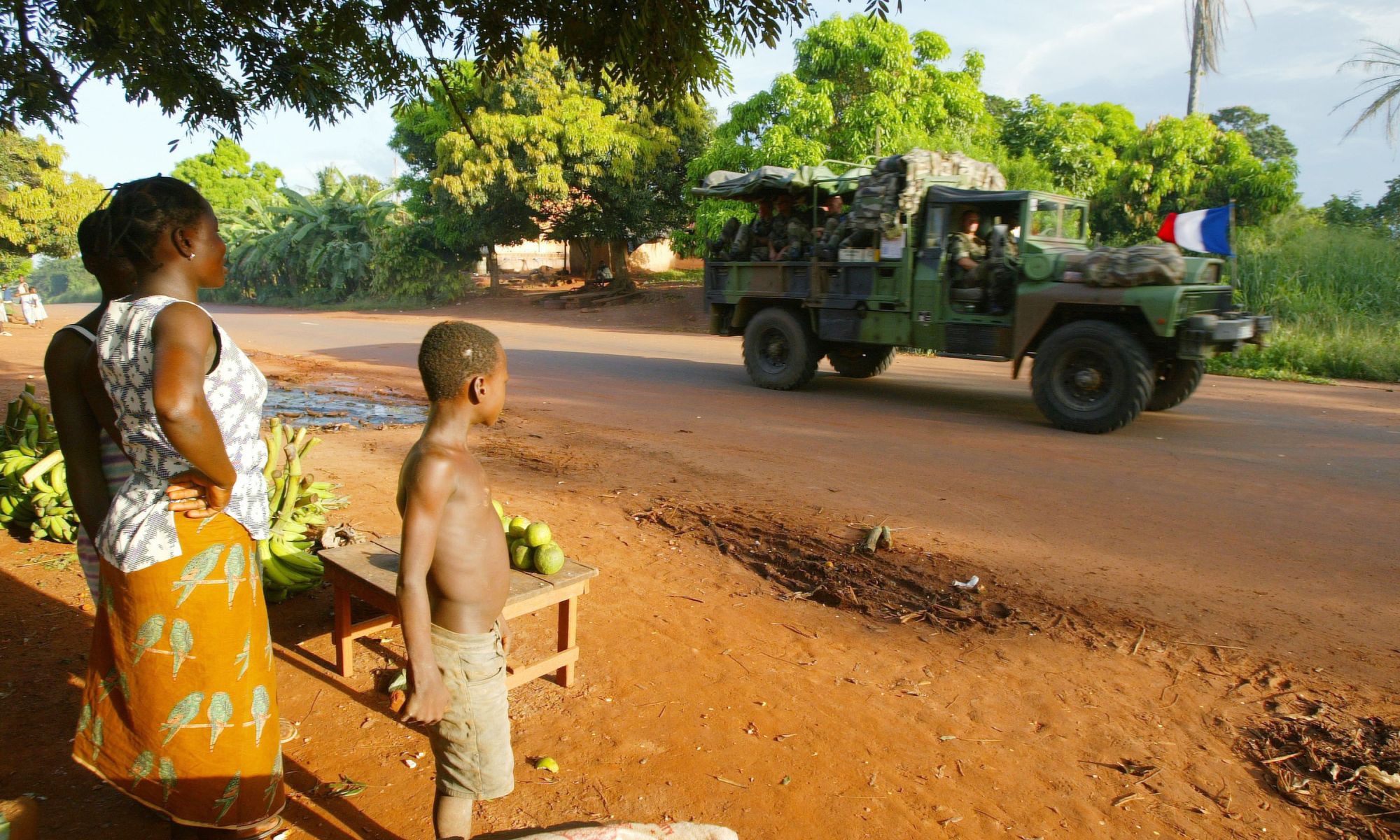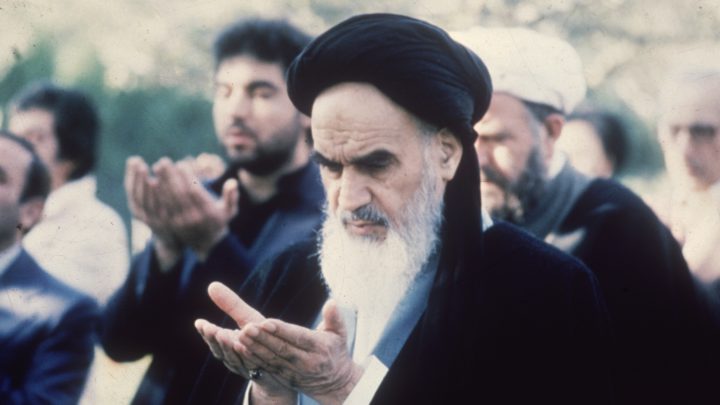
Long-read
French colonialism lives on in Africa
The CFA franc is a monetary union that subjugates African states to French economic interests.
Want to read spiked ad-free? Become a spiked supporter.
CFA franc. These two words probably do not mean much to most readers, but they encapsulate one of the world’s most enduring – and little-known – economic experiments. In the simplest possible terms, the CFA franc is a currency used by 14 countries of Western and Central Africa, all of which are former French colonies. Hence the name ‘franc’, a reference to the currency formerly used in the colonies: the French franc. Indeed, as we will see, the name is more than just a semantic legacy. France still plays a considerable role in the management of this ‘African’ currency. But, to avoid getting ahead of ourselves, let’s start by laying out the basics.
When we talk of the CFA franc, we are in fact talking of two monetary unions: the Central African Economic and Monetary Community (CEMAC), which includes Cameroon, Gabon, Chad, Equatorial Guinea, the Central African Republic and the Republic of the Congo; and the West African Economic and Monetary Union (WAEMU), which comprises Benin, Burkina Faso, Ivory Coast, Guinea-Bissau, Mali, Niger, Senegal and Togo.
These two monetary unions use two distinct CFA francs, but which share the same acronym: for the CEMAC franc, CFA stands for ‘Financial Cooperation in Central Africa’, while for the WAEMU franc it stands for ‘African Financial Community’. However, these two CFA francs work in exactly the same manner and are pegged to the euro with the same parity. Together with a 15th state – the Comoros, which uses a different franc (the Comorian franc), but which, again, is subject to the same rules as the other two – they form the so-called ‘franc zone’. Overall, more than 162million people use the two CFA francs (plus the Comorian franc).
For a long time, the CFA has been a non-issue in public debate – even in France or Africa. This, however, is changing. In recent years, it has been at the centre of an increasingly heated debate in the Francophone world, helped, in part, by books like L’arme invisible de la Françafrique: Une histoire du franc CFA (‘The Invisible Army of Franco-African Imperialism: A History of the CFA Franc’), by the French journalist Fanny Pigeaud and the Senegalese economist Ndongo Samba Sylla. As they put it:
‘For a long time, much effort has been put into keeping the topic of the CFA franc and the issues that surround it shielded from the public debate, in France as well as in Africa. Being poorly informed on the topic, citizens lacked the tools to question the system. However, in recent years, the CFA franc has ceased to be a matter debated solely by experts … and is today the subject of articles, events, television shows and conferences on the African continent and in France.’
On one hand, the French government claims that the CFA franc is a factor of economic integration and monetary and financial stability. On the other hand, the opponents of the currency – which include many African economists and intellectuals – argue that the CFA franc represents a form of ‘monetary slavery’, which hinders the development of African economies and keeps them subservient to France.
In order to make sense of this debate – and before we move on to analysing the actual mechanism of the CFA system – we need to start from the origins of this contentious currency.
A history of violence and repression
The CFA franc – which originally meant ‘franc of the French colonies of Africa’ – was created in 1945, when it became the official currency of the French colonies in Africa, which until then had used the French franc. Officially, granting the colonies their ‘own’ currency was a reward for the decisive role they played in the Second World War. In fact, as Pigeaud and Sylla write, ‘far from marking the end of the “colonial pact”, the birth of the CFA franc favoured the restoration of very advantageous commercial relations for France’.
Indeed, despite the rhetoric about granting greater autonomy to the colonies, the CFA franc was essentially a French creature, issued and controlled by the French Ministry of Finance. This meant that France could set the external value of new currency – its exchange rate vis-à-vis the French franc – according to its own needs. Which is exactly what the colonial power proceeded to do, by imposing a highly overvalued exchange rate on the colonies.
The aim was twofold: to make French exports cheaper, thus encouraging the colonies to increase their imports from metropolitan France (that is, France located in Europe, as distinguished from its colonies and protectorates); and to make the colonial exports more expensive on world markets, thus forcing the colonies to turn to the metropolis to get rid of their excess production. France, having been severely weakened by the war, therefore benefited both in terms of exports and imports, allowing it to regain its market share and to secure the supply of much-needed raw materials.
However, the most obvious benefit for France was the fact that the CFA franc allowed it to continue purchasing resources from the colonies ‘for free’, since it effectively issued and controlled the colonies’ currency, just like it did when the colonies used the French franc. In short, Pigeaud and Sylla note, contrary to French colonial propaganda, the aim of the CFA franc remained that of ‘ensuring France’s economic control of the conquered territories and facilitating the drainage of their wealth’ towards the metropolis.
What sets France apart from all the other former colonial powers in Africa is the fact its monetary empire survived the decolonisation process which began in the 1950s
It should be noted, however, that France was no exception in this regard: at the time, it was common practice among colonial powers to impose forms of monetary subservience on their respective colonies. What sets France apart from all the other former colonial powers in Africa – such as Great Britain, Belgium, Spain and Portugal – is the fact France’s monetary empire survived the decolonisation process which began in the 1950s. So while most African colonies, upon becoming independent, adopted national currencies, France managed to cajole most of its former colonies (except for Morocco, Tunisia and Algeria) into maintaining the CFA franc. It did so by resorting to all the pressure tools at its disposal: diplomacy, corruption, economic destabilisation, even outright violence. ‘To uphold the CFA franc’, Sylla writes, ‘France has never hesitated to jettison heads of state tempted to withdraw from the system. Most were removed from office or killed in favour of more compliant leaders who cling to power come hell or high water.’
The first step was to force the colonies to sign a long list of so-called ‘cooperation agreements’ before granting them their ‘independence’. Under these agreements, the new states were forced to entrust the management of virtually all key sectors of their administration to the French state, including their currency, by pledging to remain within the monetary union of the franc zone. Pierre Villon, a French Communist MP, noted at the time that in the economic, monetary and financial fields, these agreements tended ‘to limit in practice the sovereignty granted [to the former colonies] by the law’.
To understand why the African states accepted such heavy limitations to their newly won sovereignty, one must grasp the extent of their psychological subjection to France – and their fear of ‘wading into open waters’ – stemming from decades of colonial ‘tutelage’. These were, after all, agricultural or extremely underdeveloped economies.
However, it wasn’t long before the first rebellions against the CFA franc started breaking out. From the 1960s to the 1980s, various countries tried to abandon the CFA system, but very few actually succeeded. As Pigeaud and Sylla write, France ‘did everything to discourage those states that intended to leave the CFA. Intimidations, destabilisation campaigns and even assassinations and coups d’état marked this period, testifying to the permanent and unequal power relations on which the relationship between France and its “partners” in Africa was based – and is still based today’.
When Guinea, after its repeated calls for a reform of the CFA system fell on deaf ears, launched its own national currency in 1960, France responded by secretly printing huge quantities of the new currency before pouring them into the country, causing inflation to skyrocket and transforming the country into an economic basket case. Similarly, when Mali left the franc zone in 1962, France pressured neighbouring nations to limit trade with the country, contributing to a sharp depreciation of the new currency and compelling Mali eventually to re-join the CFA system. France is also believed to have played a role in the murder of at least two African progressive heads of state that were planning to launch a national currency and take their countries out of the CFA system: Sylvanus Olympio in Togo (in 1963) and Thomas Sankara in Burkina Faso (in 1987).
This long trail of violence and repression helps us understand how France became ‘the only country in the world to have succeeded in the extraordinary feat of circulating its currency, and only its currency, in politically free countries’, as the Cameroonian economist Joseph Tchundjang Pouemi observed in 1980. It also calls into question the claim that the African states adhere ‘voluntarily’ to the CFA system.
The ‘diabolical mechanism’ of the CFA franc
With this necessary premise out of the way, we can now move on to analyse the ‘diabolical mechanism’, in Pigeaud and Sylla’s words, that underlies the CFA franc. Nowadays, Paris claims that the CFA franc has become a fully fledged ‘African currency’ managed by the Africans themselves. In the late 1970s, in a process that took the name of ‘Africanisation’ of the franc zone, the headquarters of the central banks of the two monetary unions – the BEAC (Bank of Central African States), the WAEMU’s currency-issuing authority, and the BCEAO (Central Bank of West African States), the CEMAC’s currency-issuing authority – were transferred to the African continent. Furthermore, the number of French representatives sitting on the boards of the two central banks was cut back.
However, as Pigeaud and Sylla note, apart from these cosmetic changes, the mechanism at the heart of the system ‘has barely changed since the colonial era’. Today it rests on the so-called four fundamental principles of the franc zone, which continue to grant France almost absolute control over the CFA system, even though France no longer possesses the franc. Indeed, upon adopting the euro, France succeeded in ensuring that the management of the CFA system remained within its exclusive remit, with the European Union and the other member states having little or no say in the matter. The result is that ‘the spirit and function of the device on which this colonial creation rests remain the same as when it was created in 1945’.
The four principles in question are the fixed exchange rate (the anchoring of the CFA francs first to the French franc and now to the euro); the free movement of capital between the African countries and France; the free convertibility of the CFA francs into euros but not into other currencies (or even between the two CFA francs), which means that every foreign payment made in CFA francs must first be converted into euros through the Paris exchange markets; and the centralisation of foreign exchange reserves. The benefits that France accrues from the four principles underlying the CFA system are innumerable. ‘More than simply a currency’, Pigeaud and Sylla write, ‘the CFA franc allows France to manage its economic, monetary, financial and political relations with some of its former colonies according to a logic functional to its interests’.
For example, by virtue of its presence within the institutions of the franc zone (France holds a de facto veto on the boards of the two central banks), Paris still has the power to determine the external value (exchange rate) of CFA francs, without even having to inform the African countries in advance (as France did in 1994, when it devalued the CFA francs by 50 per cent, and then again in 1999, when it adopted the euro). Moreover, thanks to the free movement of capital, French companies can ‘privatise’ the profits made in Africa by repatriating them to France rather than investing them locally.
A French Communist MP noted that in the economic, monetary and financial fields, the CFA france tended ‘to limit in practice the sovereignty granted [to the former colonies] by the law’
But the real keystone of the CFA system is represented by the centralisation of foreign exchange reserves: this essentially means that the central banks of the franc zone – the BEAC and the BCEAO – must deposit a part of their foreign-exchange reserves in France, in a special account at the French Treasury known as the ‘operating account’. Initially, the BEAC and the BCEAO were required to deposit almost all their foreign reserves; nowadays, they are ‘only’ required to deposit 50 per cent (the BEAC) and 60 per cent (the BCEAO) of their total reserves. These operating accounts are denominated in euros. They are regularly credited and debited based on the international payments of the African countries. The underlying mechanism of the system is relatively simple: if the Ivorian economy exports cocoa to France for a value of €400million, this sum is credited to the operating account of the BCEAO; on the other hand, if the country imports €400million worth of equipment from the euro area, the operating account is debited for the same amount.
Theoretically, this is a quid pro quo for the ‘guarantee’ of convertibility offered by France to the countries of the franc zone. This arrangement stipulates that in the event of a shortage of foreign reserves, the French Treasury is required to grant an advance to the central banks of the franc zone to avoid a devaluation of the CFA francs. But this guarantee exists only on paper. Paris has introduced strict rules (including a series of automatic mechanisms that are triggered in the event of a scarcity of reserves) that make it highly unlikely for a ‘zero foreign exchange’ situation to arise.
Indeed, as Pigeaud and Sylla note, it is not really France that guarantees the convertibility of the francs; rather, it is the reserves of the large exporting countries, such as the Ivory Coast and Cameroon, that compensate for the scarcity of reserves of countries, such as the Central African Republic and Togo, which have fewer resources. Theoretically, the African countries could dispense with the guarantee altogether. This is testified by the fact that the operating account of the central banks of the franc zone have constantly registered a positive balance since the birth of the system (except for a brief period between the late 1980s and early 1990s).
But the real ‘exorbitant privilege’ that France derives from the operating account is that, through it, it can continue to pay its imports from the franc zone – which include a wide range of agricultural, forest, mining and energy resources, including uranium, of crucial importance for the French economy – in its own currency (first the franc, now the euro), without having to go through other currencies, and thus without depleting its own foreign reserves. To give an example, if France imports, say, $1million worth of cotton from Burkina Faso, it merely has to credit the equivalent in euros to the BCEAO’s operating account.
A barrier to development
And what about the alleged benefits that the CFA system brings to the African states? According to its defenders, the CFA franc has promoted the economic development of the member states, facilitating the region’s economic integration and creating an environment of macroeconomic stability. In reality, Pigeaud and Sylla argue, the CFA system inflicts ‘four important handicaps’ on the member countries.
The first two handicaps are obviously the fixed exchange rate and the anchoring of CFA francs to the euro. As is well known, a country that pegs its currency to another currency cannot pursue an autonomous monetary policy. The WAEMU and the CEMAC, two currency unions mainly composed of poor countries, are de facto subordinated to the monetary policy of another currency union, the Eurozone, which comprises highly developed countries with totally different priorities and needs. The consequences of this were well explained by the Nobel prize winner Robert Mundell in 1997:
‘If a small country unilaterally fixes its currency to a larger neighbour, it in effect transfers policy sovereignty to that larger neighbour. The fixing country loses sovereignty because it no longer controls its own monetary destiny; the larger country gains sovereignty because it manages a larger currency area and gains more “clout” in the international monetary system.’
Moreover, as the countries of the Eurozone know all too well, the fixed exchange rate means that:
’The 15 member countries of the franc zone, taken individually, are deprived of the possibility of using the exchange rate to soften the effects of economic shocks or to improve the price competitiveness of local products. And this in a continent where shocks of every kind – political (coups d’état, wars, social tensions etc), climatic (rainfall variations, droughts, floods etc) and economic (volatility of the prices of primary products, interest rates on the foreign debt, capital flows etc) – are commonplace. Thus, to deal with adverse shocks, the countries of the franc zone have only one option, in the absence of fiscal transfers: “internal devaluation”, that is, an adjustment of internal prices that passes through the reduction of labour income and public spending, tax increases and the decline in economic activity.’
A cursory glance at the International Monetary Fund (IMF) statistics confirms that the fixed exchange rate has proven to be a ruinous choice for the African countries: since 2000, the countries of Sub-Saharan Africa operating in a fixed-exchange-rate system have experienced economic growth between one and two percentage points below that of those countries with a flexible exchange rate. This gap is due. in particular, to ‘the lower growth of the member countries of the franc area’, states the IMF. As Sylla notes: ‘[E]xperience shows that nations like Morocco, Tunisia and Algeria, which, post-independence, withdrew from the franc zone and [minted] their own currency, are stronger economically than any user of the CFA franc’.
A third handicap follows from the first two: the under-financing of the economies of the franc zone. In order to avoid depleting their foreign reserves, which would jeopardise the fixed parity, the central banks of the franc zone must limit the growth of domestic credit (the volume of bank loans made available to governments, businesses and households). Moreover, since 1999, the countries of the franc zone are subject to the same budgetary constraints (strict deficit- and debt-to-GDP limits) of the Eurozone countries, as well as to the prohibition of monetary financing.
One of the consequences of this is that African countries must turn to foreign countries – often France itself – to finance their development, contracting foreign currency loans at very high interest rates. This mechanism further tightens the noose around African countries, with dramatic social consequences. As Pigeaud and Sylla report, ‘every dollar spent in Africa on servicing the debt translates into a 29 per cent reduction in healthcare expenditure (which, in more tragic terms, can be translated economically as follows: every $140,000 devoted to servicing the debt, a child dies)’.
Such under-financing clearly penalises the economic growth of African countries, as admitted even by economists supportive of the CFA franc, such as Sylviane Guillaumont Jeanneney: ‘The weak growth of the UEMOA is partly explained by a lower investment rate compared to other regions of Africa.’ The Senegalese economist Demba Moussa Dembélé, a critic of the CFA system, is more unforgiving. Because of the fixed parity and the restrictive policy of the BCEAO, he explains, ‘we are subject to the imperatives of the European Central Bank, which is obsessed with fiscal discipline and the fight against inflation, while the priorities of our underdeveloped countries should be employment, investment in productive capacity, and the creation of infrastructures. This implies a greater distribution of credit to the private and public sector.’
France is also believed to have played a role in the murder of at least two African progressive heads of state that were planning to launch a national currency and take their countries out of the CFA system
Lastly, the final handicap: the free movement of capital. This factor, Pigeaud and Sylla write, ‘considerably hinders the development of the African countries, translating in most cases into a financial bleed-out… When fundamental sectors of the economy are under the control of foreign capital, as is the case in most countries of the franc zone, the free movement of capital acts as a mechanism for draining African resources towards the rest of the world: a legalised looting.’ This phenomenon can be observed above all in those countries most endowed with natural resources: Ivory Coast, Cameroon, Congo, Gabon and Equatorial Guinea. Suffice to say that between 2000 and 2009 the net transfers of income to the rest of the world – which include the profits and dividends of the multinationals operating in those countries – amounted to roughly 43 per cent of GDP for Equatorial Guinea and 30 per cent percent of GDP for the Congo.
The result of these ‘four handicaps’ is that, although some countries of the franc zone (especially those richer in raw materials) have experienced a rather strong annual GDP growth rate in recent years, an analysis of the long-term statistics shows that the real GDP per capita – or ‘average income’ – of most countries of the zone is equal to or lower than that recorded in the 1970s or 1960s. It is therefore not surprising that socio-economic progress in the franc zone has been very limited: 12 of the 15 African states of the franc zone are classified as ‘Low Human Development’ countries, the last category in the Human Development Index (HDI) developed by the United Nations Development Program. In 2015, the last four places in the HDI ranking went to Burkina Faso, Chad, Niger and the Central African Republic, all of which are part of the franc zone. Furthermore, ten states of the franc zone are part of what the United Nations calls the ‘Least Developed Countries’.
‘Obviously, the CFA franc is not the only cause of these countries’ underdevelopment and other African countries have not necessarily “fared better”’, Pigeaud and Sylla note. ‘But the claim that the CFA franc has “promoted” growth and development in the area is patently false’:
‘In all the CFA countries, the underdevelopment of human potential and productive capacities is the norm. The CFA system has not stimulated neither the commercial integration of its members, nor their economic development or their economic attractiveness. On the contrary, it has deprived countries of the ability to conduct an autonomous monetary policy, paralysed their productive dynamics through the limitation of bank credit, penalised the competitiveness of local production through structurally overvalued exchange rates and facilitated destabilising forms of capital outflow, with dramatic social consequences.’
An unsustainable status quo
In light of the above, one might ask why the countries of the franc zone don’t simply abandon the CFA system. A first response is that, even today, France has no qualms about using its power to quell any challenge to the system. A particularly striking example of this occurred recently in the Ivory Coast. It all started after the 2010 presidential elections, when the country found itself with two presidents: Laurent Gbagbo, the outgoing president, had been recognised as the legitimate winner of the elections by the Ivorian Constitutional Council and had therefore stayed in power; Alassane Ouattara was considered the winner by the ‘international community’. Wanting to see Ouattara in power, the then French president Nicolas Sarkozy immediately resorted to the CFA apparatus to put pressure on Gbagbo.
To begin with, the French government cajoled the BCEAO – the central bank of the CEMAC, the monetary union of which the Ivory Coast is a part – into preventing the Ivorian government from accessing its accounts at the BCEAO and closing down the Ivorian branches of the BCEAO. Then, the bank’s board forced its governor to resign, accusing him of being too complacent with the Ivorian authorities. Shortly afterwards, the French government also forced the French banks operating in the country to stop their activities. But Gbagbo refused to give in. At that point, France moved to the next stage. It mobilised its invisible weapon: the operating account. With the assistance of the BCEAO, the French Ministry of Finance suspended the country’s payment and exchange operations: effectively, all commercial and financial transactions between the Ivory Coast and the rest of the world were blocked. The Ivorian companies found themselves unable to export or import. ‘The French authorities’, Pigeaud and Sylla write, ‘demonstrated that the operating account could become a formidable instrument of repression: through it, France was able to organise a frighteningly effective financial embargo.’
As Justin Koné Katinan, Laurent Gbagbo’s budget minister at the time, would later say: ‘I witnessed the reality of Franco-African imperialism with my own eyes. I saw how our financial systems continue to be totally under France’s dominion, [and operated] in the exclusive interest of France. I saw how a single official in France can block an entire country.’ Faced with France’s financial embargo, the Ivorian administration began to take steps to create its own national currency. At that point, France threw away its mask: it mobilised its armed forces present in the Ivory Coast – as in other countries of the franc zone – and overthrew the government. End of story.
The aforementioned episode shows just how simplistic the claims that the countries of the franc zone adhere ‘voluntarily’ to the CFA system really are. That said, there’s no doubt that the African elites of the franc zone, with few exceptions, support the CFA system. This is hardly surprising. After all, ‘they were put into power – and they continue to exercise it – with Paris’s support’, Pigeaud and Sylla note. African leaders know that as long as they continue to facilitate the operations of the French state and don’t challenge the CFA franc, they will enjoy the ‘tutelage’ of the former colonial power, including against their citizens and opponents. Furthermore, despite being designed to serve primarily the interests of France, the CFA system offers certain economic benefits to some African social groups. The pegging of the CFA franc to the euro, a strong currency, allows importers in African countries, for example, to buy products at an advantageous price that allows them to easily compete with local producers. At the same time, it provides the local middle and affluent classes with an artificially high international purchasing power that gives them the opportunity to access the same goods and services as their Western counterparts. Finally, the free movement of capital allows the wealthy elites of those countries to stash their fortunes abroad, more or less legally.
However, as mentioned at the beginning, things are starting to change. As Pigeaud and Sylla write: ‘The demands to put an end to the CFA franc are multiplying and the pressure is increasing.’ More and more African economists, intellectuals, artists and social movements are calling for an end to monetary colonialism. Their arguments, the authors note, ‘have a certain echo in public opinion, increasingly aware that, without monetary independence, the states of the franc zone will continue to remain subject to France… Without necessarily knowing all the technical details of the case, a growing number of African citizens are realising that it will be impossible to freely determine their own destiny without true monetary sovereignty.’
A warning that even the peoples of the Eurozone – the only other monetary union in the world comprising formally sovereign states – would do well to heed.
Thomas Fazi is a journalist based in Italy and the co-author, alongside William Mitchell, of Reclaiming the State, published by Pluto Press. (Buy this book from Amazon(UK).)
Who funds spiked? You do
We are funded by you. And in this era of cancel culture and advertiser boycotts, we rely on your donations more than ever. Seventy per cent of our revenue comes from our readers’ donations – the vast majority giving just £5 per month. If you make a regular donation – of £5 a month or £50 a year – you can become a and enjoy:
–Ad-free reading
–Exclusive events
–Access to our comments section
It’s the best way to keep spiked going – and growing. Thank you!







Comments
Want to join the conversation?
Only spiked supporters and patrons, who donate regularly to us, can comment on our articles.